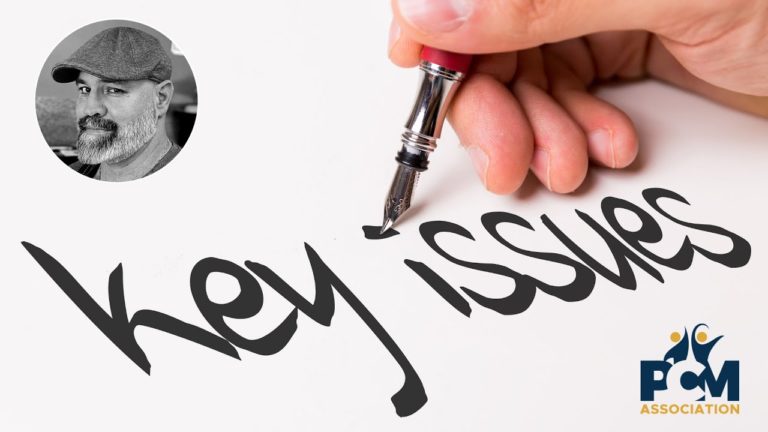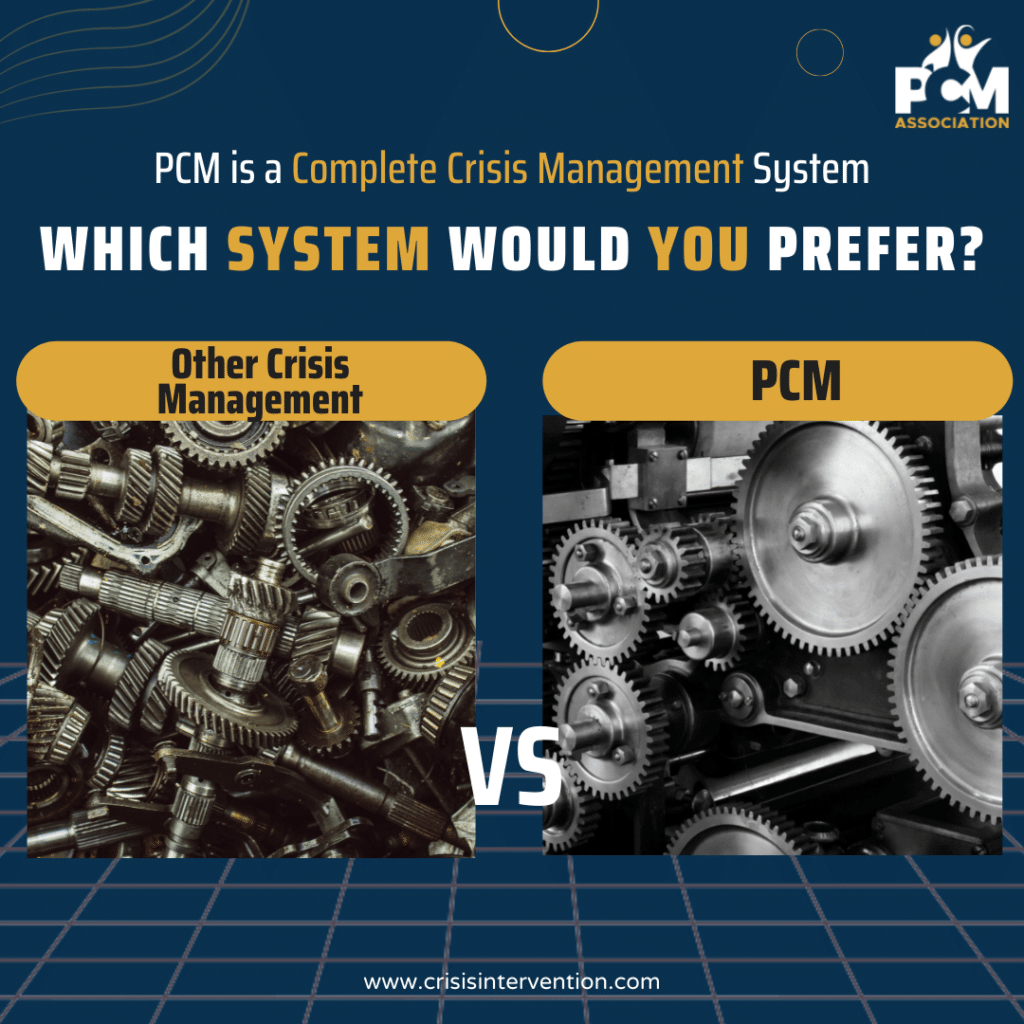A Balanced Toolbox for Reducing the Rapidly Growing Behavioral Issues in Schools
In a recent poll of over 500 educators, 65% report that disruptive behavior is increasing in schools. From milder behaviors such as "calling out" or being out of seat to more intense behaviors like threats and physical aggression, these issues can result in a number of negative outcomes: frustration, fear, decreased student achievement, and an increase in educators leaving the field being just a few. Educators want to be in a school that has a positive climate and culture; one characterized by learning and prosocial behavior. Unfortunately, in response to these behavioral issues, educators, like most people, attempt to use punishment to solve the problem, but end up creating deeper problems. Even given the mounting research that demonstrates the negative effects on students and their achievement, educators continue to use punishment as a result of the apparent immediate effect on behavior. Given the principles of human behavior, this tendency is not surprising.
Research in applied behavior analysis (ABA) has demonstrated that, all behavior occurs as a result of positive reinforcement or negative reinforcement. In other words, human behavior is operant in that it allows access (positive reinforcement) to meaningful things and situations (e.g., food, people, activities), or in that it allows for avoidance (negative reinforcement) of aversive things and situations (e.g., driving the speed limit to avoid a ticket). Reinforcement that is positive (added), immediate, and certain maintains the largest impact on behavior. For example, the teacher who uses an attention signal to get her students to stop, look, and listen, will continue using that attention signal as the result of the “addition” of the number of students who are looking and listening following the attention signal. This followed by reinforcement that is negative (subtracted), immediate, and certain. For instance, if you are speeding on the highway and you see police lights down the road, you slow down to avoid (subtract) the chance that you will receive a speeding ticket. As reinforcement becomes uncertain or becomes more distant from the behavior, it has diminishing influence on the behavior. This is the reason so many diets and exercise initiatives fail, because the weight loss or muscle gains are uncertain and in the distant future!
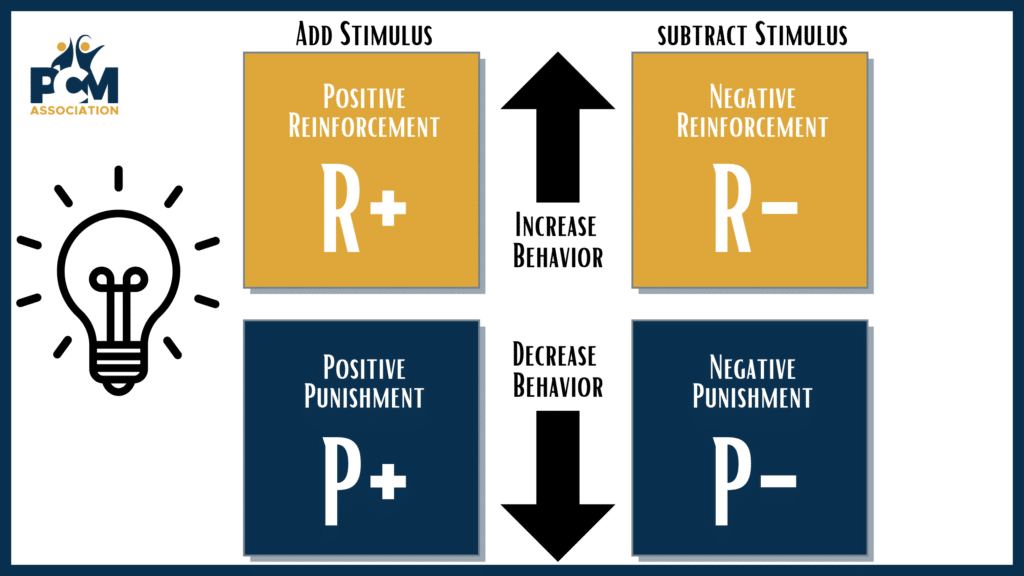
Punishment, in contrast, is a stimulus that decreases or stops the future occurrence of behavior. For example, the teacher who reprimands a student for talking, and the student stops talking. Given the definitions provided by ABA, it is easy to discern that educators punish because they are reinforced by the immediate observable impact in terms of an undesired behavior temporarily stopping. Unfortunately, this same science has clearly illustrated that punishment, when overused or used incorrectly, will gain only compliance in the presence of the punisher, potentially make behaviors worse, and can produce other collateral damage. Bandura (1973) confirms this through his social learning theory as he pontificates that violent behavior can be learned at a very early age through a child’s experiences.
Common Traps
Author and professor, Dr. Glenn Latham, identifies 8 “traps” that educators commonly fall into in relation to attempting to use punishment, the titles of which are pretty self-explanatory. These are
- The Criticism Trap
- The Arguing Trap
- The Logic Trap
- The Questioning Trap
- The Sarcasm Trap
- The Despair/Pleading Trap
- The Threat Trap
- The Force Trap
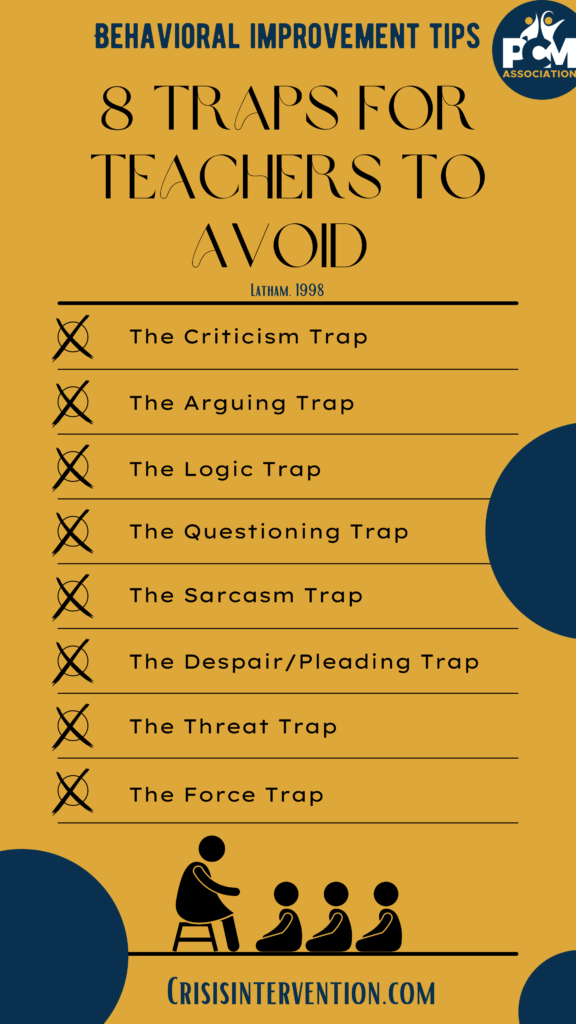
Is Punishment Bad?
While punishment has become a "naughty" word in education, it is in fact, NOT! A true punisher is simply something that decreases the future occurrence of a behavior. If this is a "bad" behavior, then punishment is a good thing! In the example of a student talking, if the teacher reminds him that he shouldn’t be talking during the assignment, and he stops, this is an effective punisher, and likely a good thing. The problem isn't really about applying a punishment for misbehavior. The problem usually involves how the punishment is given (e.g., coercively), and how frequently it is delivered relative to the amount of positive reinforcement delivered. So in the above example, if all the teacher does is remind the student to stop talking, or does it in a way that is "mean" or otherwise coercive, then it can become a "bad" thing.
What to do Instead
If educators are following a 4:1 ratio of positive reinforcement to punishment, they are probably in good shape. That is, recognizing "good" behavior at least four times more than recognizing the "bad." As long as they be aware of how they are delivering that "1." If they deliver punishment in a way that is "mean" or coercive, or they use the wrong tool at the wrong time, the ripple effects can be devastating to the makeup of their classroom. They say "one lie can undo a thousand truths." I think this can be applied to the poor application of punishment as one highly coercive interaction can undo a thousand positive ones. Educators must be careful of the tone, volume, and rate of their voice while being careful to deliver the punishment privately whenever possible.
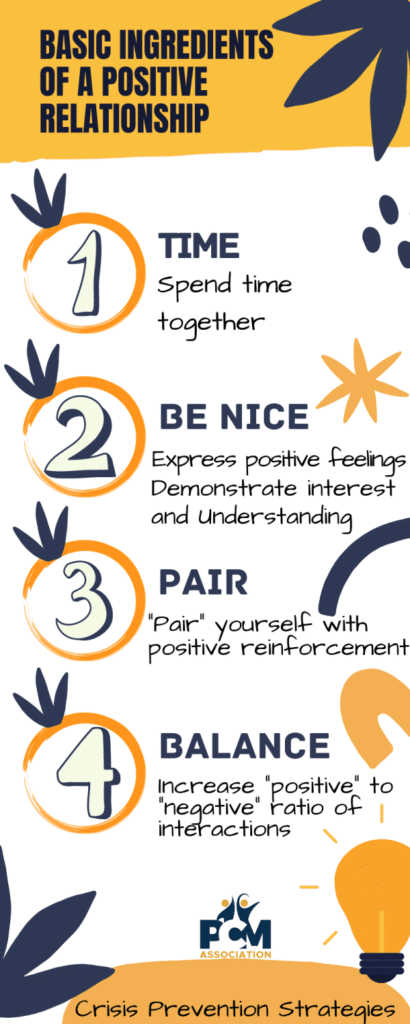
The simplest and most effective alternative to punishment is building relationships and strengthening expected behavior through positive reinforcement
Build Relationships and Strengthen Behavior
Positive reinforcement is the only means of obtaining discretionary effort (Daniels & Daniels, 2004) where students will go above and beyond expectations; negative reinforcement (fear of punishment), in contrast, results in compliant behavior characterized by students “doing just enough” to avoid getting into trouble. But building relationships and strengthening expected behavior isn’t as easy as it sounds. It is a process that requires a complete skillset that many people lack. Rooted in the science of human behavior, these processes are rooted in behavior science. In addition, building relationships and strengthening behavior takes times, so teachers still must respond to misbehavior in a way that stops or decreases it.
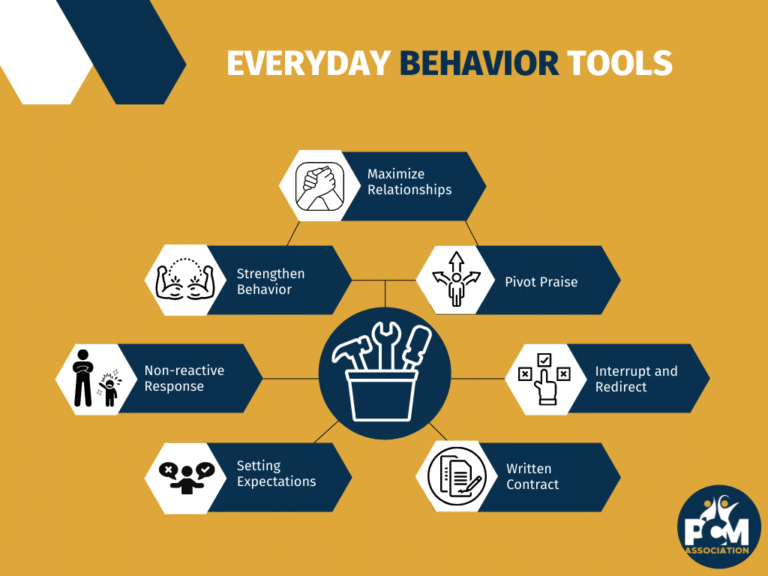
The Everyday Behavioral Toolbox
In the end, they need a balanced toolbox. One where they can apply precisely the right tool for strengthening behavior aligned with expectations, and precisely the right tool for weakening or stopping behaviors that are disruptive and otherwise not aligned with expectations. And what are these tools you might ask? Well, at PCMA, we’ve identified them and created a train the trainer’s course around them. This research based course, Everyday Behavior Tools, equips instructors with all of the tools outlined in this graphic. As part of the practitioner course, teachers, school leaders, staff and even parents will learn to recognize 10 coercive interactions linked to the criticism traps above as well as how and when to apply the Everyday Behavior Tools so they can more effectively bring out the best in their students.
Choose to Improve Behavior Today
If you want to make a positive difference in your school now, click this link to read more about the Everyday Behavior Tools course, or contact shoover@pcma.com to find out how you can register to be an Everyday Behavior Tools Trainer today!
For more content related to preventing, de-escalating, and managing intense behavior, be sure to subscribe to this page as well as our YouTube Channel linked below.
